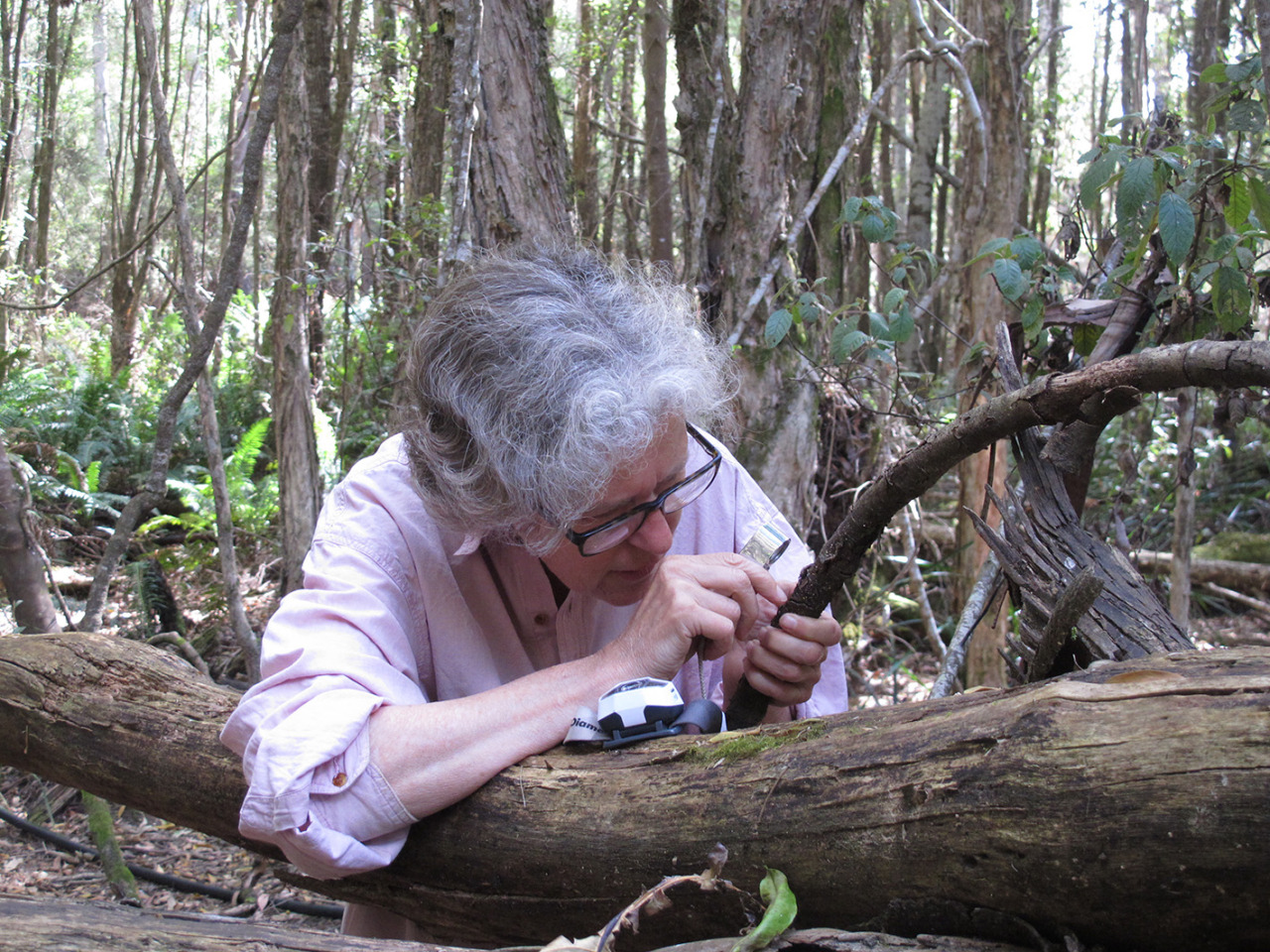Slime Mo(u)lds in Tasmania - Observation of the Week, 3/18/19

Our Observation of the Week is this Cribraria cancellata slime mold, seen in Australia by @sarahlloyd!
If you’ve uploaded a slime mold observation to iNaturalist recently, there’s a good chance that Sarah Lloyd has identified it. She’s our top slime mold identifier, with over 1,500 IDs added, and she only joined in November of 2018. But Sarah’s interest in slime molds (or “moulds” depending on where you learned English) is relatively recent, beginning in 2010. “After beginning a routine of daily morning walks I started to notice and photograph plasmodia (the second feeding stage of a slime mould) or their exquisitely miniscule spore-bearing fruiting bodies,” she says, “[And] I was hooked! By September that year I was closely examining logs and stumps with a hand lens and strong headlamp, essential equipment for seeing the fruiting bodies in the darkness of the shady forest—and I started to accumulate reference books.” She soon began to collect them as well.
Slime molds (Myxomycetes), as Sarah notes, “have mystified naturalists for centuries.” Originally classified as plants by Linnaeus, they were moved to fungi, then to animals, and
there is now general agreement that myxomycetes are Amoebozoans but whether this is a supergroup or kingdom is a matter of debate...Their predatory amoebae live in soils rich in organic matter where they feed on bacteria and single-celled fungi such as yeasts. Thus, they play important ecological roles including enhancing soil fertility through nutrient recycling….[and] despite being found wherever there is organic material, they are believed to be the least studied of all the microorganisms.
Amoeba-like when separate, individual cells will join together to form a plasmodium and eventually form rigid spore-bearing structures called a sporangia, which is what you see photographed above. Sarah notes that “slime mould fruiting bodies are never fleshy, but are essentially a mass of spores. They (and substrate) dry within hours and retain indefinitely all features needed to describe them.”
Sarah observed the Cribaria cancellata sporangia “on a log of a severely decayed silver banksia...part of a very extensive group of thousands of sporangia that covered 40 x 10 cm (16 x 4 inches).” She says they were about 1.5 mm in height and
[the species’] colour and distinctive ribs makes it one of the few species of slime moulds that can be identified in the field with the aid of a 10x hand lens. Unusually for a slime mould, the species appears in the same location each year and has stained the decaying wood a deep maroon colour.

Sarah (above, inspecting a slime mold), tells me
I enjoy interacting with people and identifying their slime moulds photos on iNat. People are often intrigued to find out more about them – and to find more slime moulds to photograph. Through people’s posts I can learn about species that occur in other regions of the world and see photos of myxomycetes I’ll never see in Tasmania. As an avid naturalist passionate about documenting Tasmania’s biodiversity, it’s fantastic to be able to contribute (via iNat) to biodiversity monitoring projects elsewhere in the world from the middle of a forest in Tasmania.
I have recently started to upload my own observations of slime moulds and many other species, something that should keep me well occupied for many years to come.
- by Tony Iwane.
- Check out Sarah’s Tasmanian Myxomycetes site, as well as her Instagram account!
- And her book, Where the slime mould creeps!
- Slime mold time lapse!




Comments
WooHoo! Great stuff, Sarah! Thanks for all you do on iNat. Slime molds are fascinating organisms, and this photo is astonishingly good!
A kindred spirit! Wonderful to read of Sarah's work and devotion to a Class of organisms so often ignored, due mainly to their size.
This is a mind-boggling photo of an amazing organism I recently learned more about, thanks to Sarah! My heartfelt thanks for all of your outreach to the iNat community about slime moulds !
I so appreciate folks like Sarah that devote the time to share their expertise on specific groups like this. It’s extremely welcoming to all of us — thanks, @sarahlloyd !
Thanks @sarahlloyd - you've done so much to expand my personal knowledge of slime mo(u)lds, helping me understand what things need a good look to move the ID along and I'm doing my best to pass this on to people I meet in the field. I absolutely love the images you take and they are often a topic of admiration in my household. Thank you for sharing your images and your knowledge with all of us.
Sarah, what a great photo. Thank you for all the help you have given me. I could use some pointers to improve my photography.
I revel in biological diversity but feel particularly incomplete because I've never seen (or noticed?) a slime mold "in the wild". @sarahlloyd's work is definitely inspiring! And that BBC time lapse video is both captivating and creepy! Thanks, @tiwane.
Susan Hewitt reminded me that our beloved "Dog Vomit" is a slime mold. It's always a lovely yellow blob (read: conversation starter) to encounter in our juniper-oak woodlands in Central Texas!
So cool! I did have a slime mold photo on iNaturalist identified by Sarah and I wrote about the experience here: https://curlewnature.blogspot.com/2019/01/slime-mold-networks.html
Absolutely gorgeous photo. These guys are amazing but I don't tend to notice them much. Any tips on how to change that?
Add a Comment